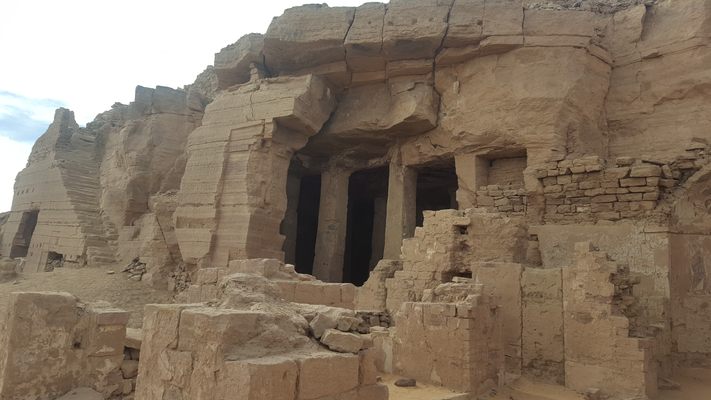About
Rising up along the west bank of the Nile is a relatively little-visited archaeological gem, the Tombs of the Nobles, also called Qubbet el-Hawa, where ancient carvings and hieroglyphics still exist alongside Christian murals and Muslim monuments.
This sand-swept cliffside necropolis is located a short ferry ride across the river from Aswan, and can be seen from all around the city. The site is home to hundreds of rock-cut tombs housing the remains of high-ranking and noble Egyptians from antiquity. Many tombs date back as much as 3,800 years. They are decorated with paintings, hieroglyphics, and statues, and some of the larger tombs can be entered and explored.
First discovered by British archaeologist Lord Greenville in 1885, the cemetery is still being excavated to this day. The list of notable residents is long, but some of the more famous burials from the Old and Middle Kingdom include the tomb of Harkhuf—famous for being covered in inscriptions that give a glimpse into the culture of the era—governors of the Egyptian Pharaohs Pepi II and Amenemhat II and the Lady Sattjeni from the ruling family of Elephantine.
Related Tags
Know Before You Go
Locals will try to sell you felucca rides across the West Bank on arrival in Aswan, but it's best to head to the public ferry at the Nile Cruise terminal, which costs 10EgP each way. Entrance fees are 60EgP, and you will be escorted by a guide. The paths are quite steep. There is the option to take a camel, but the animals don't look well treated.
Egypt Family Adventure: Pyramids, Mummies & The Mighty Nile
Cross dream-like deserts and uncover the secrets of ancient pyramids.
Book NowCommunity Contributors
Added By
Published
December 17, 2018




















































